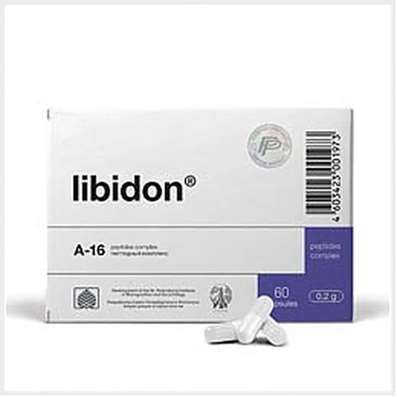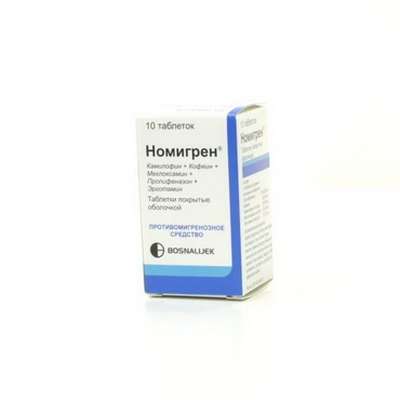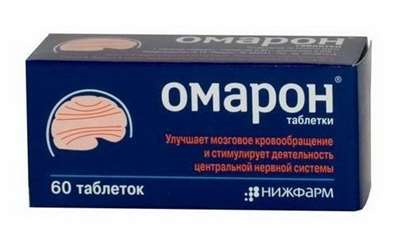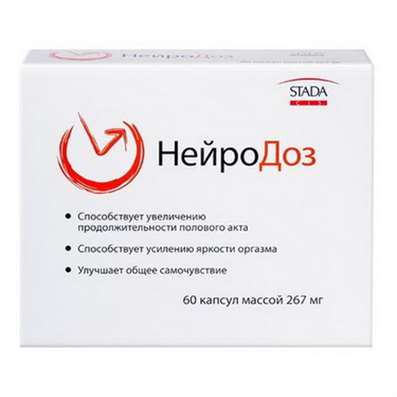Instruction for use: Diclo-F
I want this, give me price
Active substance Diclofenac
ATX Code S01BC03 Diclofenac
Pharmacological group
Non-steroidal anti-inflammatory drug (NSAID) [NSAIDs - Acetic acid derivatives and related compounds]
Non-steroidal anti-inflammatory drug [Ophthalmic products]
Nosological classification (ICD-10)
H10.9 Conjunctivitis, unspecified
Trahomny conjunctivitis, catarrhal conjunctivitis, Giperpapillyarny conjunctivitis, Non-infectious conjunctivitis, purulent conjunctivitis, Purulent conjunctivitis form, Year-round conjunctivitis, purulent conjunctivitis, Subacute conjunctivitis, Secondarily infected with conjunctivitis
S05 Injury of the eye and orbit
Wounds of the eye penetrating, Non-penetrating wound of the eyeball, Superficial injury of the cornea, Post-traumatic keratopathy, Post-traumatic central retinal dystrophy, Penetrating wound of the cornea, Condition after eye injuries, Condition after eyeball injuries, Penetrating corneal wounds, Injuries to eye tissues, Injuries to the cornea, Injury of anterior part of eye
Z100 * CLASS XXII Surgical practice
Abdominal surgery, adenomectomy, Amputation, Coronary angioplasty, Angioplasty of the carotid arteries, Antiseptic skin treatment for wounds, Antiseptic Hand, Appendectomy, atherectomy, Balloon coronary angioplasty, Vaginal hysterectomy, The coronary bypass, Interventions in the vagina and cervix, Interventions on the bladder, Intervention in the mouth, Restoration and reconstructive surgery, Hand hygiene of medical personnel, Gynecologic surgery, Gynecological intervention, Gynecological surgery, Hypovolemic shock during operations, Disinfection of purulent wounds, Disinfection of wounds edges, Diagnostic intervention, Diagnostic procedures, Cervical Diathermocoagulation, Long-surgery, Replacing the fistula catheters, Infection in orthopedic surgery, Artificial heart valve, cystectomy, Short-term outpatient surgery, Short-term operation, Short surgical procedures, Krikotireotomiya, Blood loss during surgery, Bleeding during surgery and in the postoperative period, Kuldotsentez, laser photocoagulation, laser coagulation, retinal laser coagulation, Laparoscopy, Laparoscopy in Gynecology, CSF fistula, Small gynecological operations, Small surgical procedures, Mastectomy and subsequent plastic, mediastinotomy, Microsurgical operations on the ear, Mukogingivalnye operation, suturing, Minor surgery, neurosurgical operation, Immobilization of the eyeball in ophthalmic surgery, testectomy, pancreatectomy, Perikardektomiya, The period of rehabilitation after surgery, The period of, convalescence after surgery, Percutaneous transluminal coronary angioplasty, Pleural thoracentesis, Pneumonia postoperative and posttraumatic, Preparation for surgical procedures, Preparation for surgery, Preparation of the surgeon's hands before surgery, Preparation of the colon for surgical procedures, Postoperative aspiration pneumonia in neurosurgical and thoracic surgery, Postoperative nausea, Postoperative bleeding, postoperative granuloma, postoperative shock, The early postoperative period, myocardial revascularization, Radiectomy, gastric Resection, bowel resection, uterine Resection, liver Resection, enterectomy, Resection of part of the stomach, Reocclusion of the operated vessel, Bonding tissues during surgical procedures, Removal of sutures, Condition after eye surgery, Condition after surgery, Condition after surgery in the nasal cavity, Condition after gastrectomy, Status after resection of the small intestine, Condition after tonsillectomy, Condition after removal of the duodenum, Condition after phlebectomy, Vascular surgery, Splenectomy, Sterilization of surgical instruments, Sterilization of surgical instruments, sternotomy, Dental surgery, Dental intervention in periodontal tissues, strumectomy, Tonsillectomy, Thoracic surgery, total gastrectomy, Transdermal intravascular coronary angioplasty, Transurethral resection, Turbinektomiya, Removal of a tooth, cataract surgery, Removal of cysts, tonsillectomy, Removal of fibroids, Removing the mobile primary teeth, Removing polyps, Removing broken tooth, Removal of the uterus body, Removal of sutures, Urethrotomy, Fistula likvoroprovodyaschih ways, Frontoetmoidogaymorotomiya, Surgical infection, Surgical treatment of chronic limb ulcersm, Surgery, The surgery in the anal area, The surgery on the colon, Surgical practice, The surgical procedure, Surgical interventions, Surgery on the gastrointestinal tract, Surgical procedures on the urinary tract, Surgical procedures on the urinary system, Surgical intervention of the genitourinary system, Surgical procedures on the heart, Surgical manipulation, surgery, Surgery on the veins, Surgical intervention, Vascular surgery, Surgical treatment of thrombosis, cholecystectomy, Partial gastric resection, transabdominal hysterectomy, Percutaneous transluminal coronary angioplasty, Percutaneous transluminal angioplasty, Coronary artery bypass, tooth Extirpation, Extirpation of milk teeth, pulpectomy, pulsative cardiopulmonary bypass, tooth Extraction, teeth Extraction, cataract extraction, Electrocoagulation, endourological intervention, episiotomy, Etmoidotomiya, Complications after tooth extraction
Composition
Eye drops 1 ml
active substance:
diclofenac sodium 1 mg
auxiliary substances: benzalkonium chloride - 0.1 mg; disodium edetate - 1 mg; boric acid - 15 mg; tromethamine - 6 mg; polyoxyl-35-castor oil - 20 mg; povidone - 15 mg of sodium hydroxide or hydrochloric acid - to a pH of 7.7; water for injection - up to 1 ml
Description of dosage form
Transparent solution from colorless to light yellow color.
pharmachologic effect
Pharmacological action - anti-inflammatory local.
Pharmacodynamics
Has anti-inflammatory, analgesic and antipyretic effect. The mechanism of action is due to the indiscriminate inhibition of COX activity (cyclooxygenase) -1 and -2, which leads to suppression of the synthesis of PG (prostaglandins) in the inflammatory focus.
Diclofenac reduces inflammation of the eye, which can result from infection, trauma or surgery; reduces miosis during surgical operations, reduces synthesis of PG and their content in the moisture of the anterior chamber.
Pharmacokinetics
When instillation of eye drops, diclofenac is absorbed into the systemic circulation. However, the drug concentration achieved in the blood is well below the detection limit and is not clinically relevant.
indications
inhibition of miosis during surgery for cataract;
treatment and prevention of inflammatory processes after surgical interventions on the eyeball;
prevention of cystic edema of the macula after operations for cataracts;
treatment of non-infectious conjunctivitis;
treatment and prevention of post-traumatic inflammatory process with penetrating and non-penetrating injuries of the eyeball (as an addition to local antibiotic therapy).
Contraindications
hypersensitivity to the active substance of the drug or to any of the auxiliary ingredients that form part of this dosage form of the drug;
hypersensitivity to acetylsalicylic acid or other NSAIDs;
violation of hematopoiesis of unknown origin;
erosive and ulcerative processes in the gastrointestinal tract in the acute stage.
With caution: epithelial herpetic keratitis (including in the anamnesis); diseases that cause blood clotting disorders (including hemophilia), prolonged bleeding time, a tendency to bleed; elderly age.
pregnancy and lactation
There are no data on the use of the drug during pregnancy and lactation. With the use of NSAIDs in the III trimester of pregnancy, an increased risk of fetal circulatory disorders may occur. Use in pregnant and lactating mothers is possible only for the purpose of the doctor in charge, if the expected therapeutic effect exceeds the risk of developing possible side effects.
Side effects
In rare cases - burning eyes, blurred vision (immediately after instillation); opacity of the cornea (thorns), iritis.
Allergic reactions: itching in the eyes, hyperemia, angioedema, fever, chills, photosensitivity, skin rash (mainly erythematous, urticaria), erythema multiforme exudative, nausea, vomiting.
Interaction
It is not recommended simultaneous use of this drug with diflunizal (because possible development of bleeding from the gastrointestinal tract) and other NSAIDs, including acetylsalicylic acid in large doses (3 g or more per day), drugs sulfonylurea, methotrexate.
Application in conjunction with lithium preparations, digitoxin, indirect anticoagulants leads to an increase in their effect.
If necessary, you can apply simultaneously with other eye drops, including. containing GCS. In this case, the break between applications should be at least 5 minutes to prevent the leaching of active substances with subsequent doses.
Dosing and Administration
Locally.
To inhibit intraoperative myosis, they are instilled in the conjunctival sac for 2 hours at intervals of 30 minutes (4 times) before the operation.
To prevent cystic edema, the macula is instilled 1 drop 3-4 times a day for 2 weeks after the operation.
Other indications: 1 drop 3-4 times a day, depending on the severity of the condition. The course of treatment can last from 1 to 2 weeks.
Overdose
There is no evidence of an overdose of the drug.
Precautionary measures
There is no reliable data on the use of the drug in children, so the drug should be used in this category of patients only if the expected benefit exceeds the potential risk.
special instructions
Patients using contact lenses should use Diclo-F® only with the lenses removed and wear them again 15 minutes after instillation of the drug.
The bottle must be closed after each use. Do not touch the tip of the pipette to the eye.
During the treatment period, it is necessary to refrain from engaging in potentially dangerous activities that require an increased concentration of attention and speed of psychomotor reactions.
Form of issue
Eye drops, 0,1%. For 5 ml in a plastic bottle-dropper with a screw cap. Each bottle-dropper is placed in a cardboard box.
For 5 ml in a vial of dark glass, closed with a rubber stopper, crimped with an aluminum cap with a safety plastic cap. One glass vial with a sterile dropper packed in a PE bag is placed in a cardboard box.
Conditions of leave from pharmacies
On prescription.
storage conditions
In the dark place at a temperature of no higher than 30 ° C (do not freeze).
Keep out of the reach of children.
Shelf life
2 years. After opening the bottle - 1 month.
Do not use after the expiry date printed on the package

 Cart
Cart





